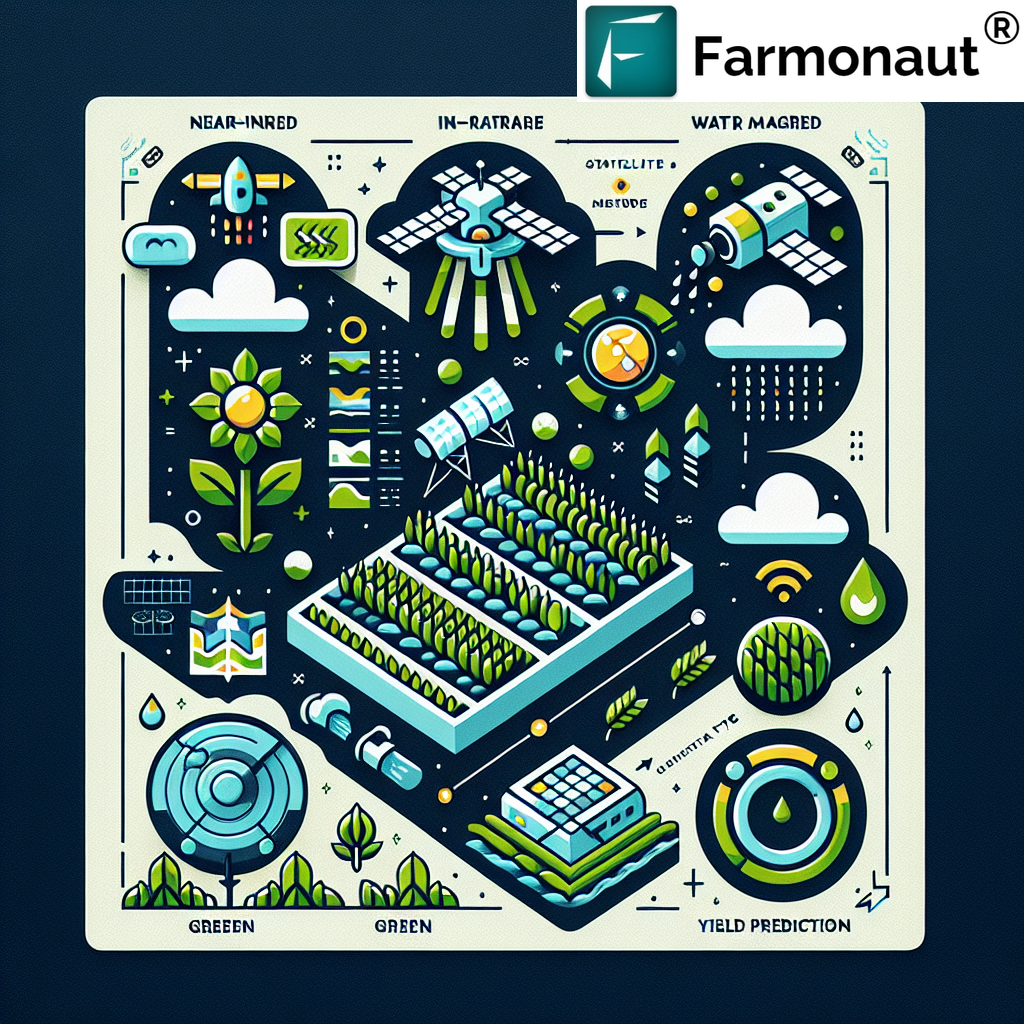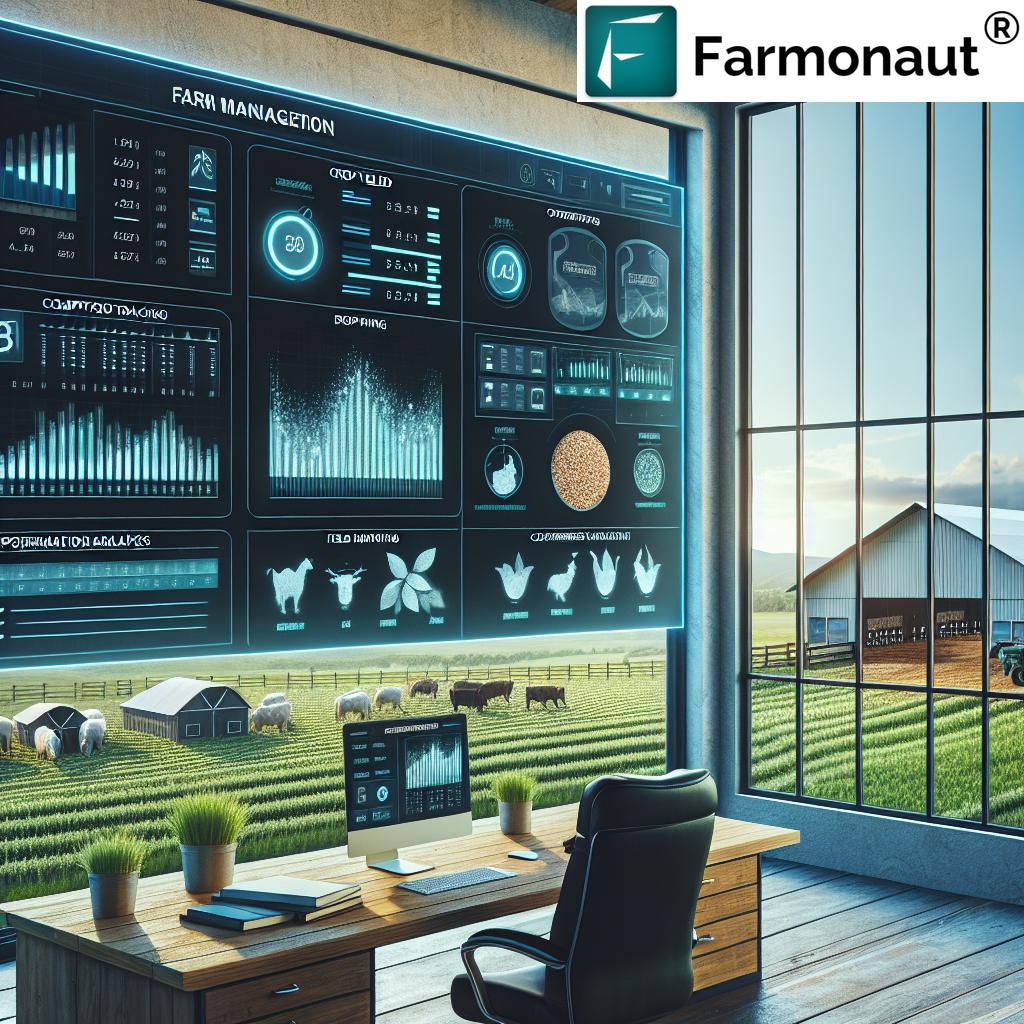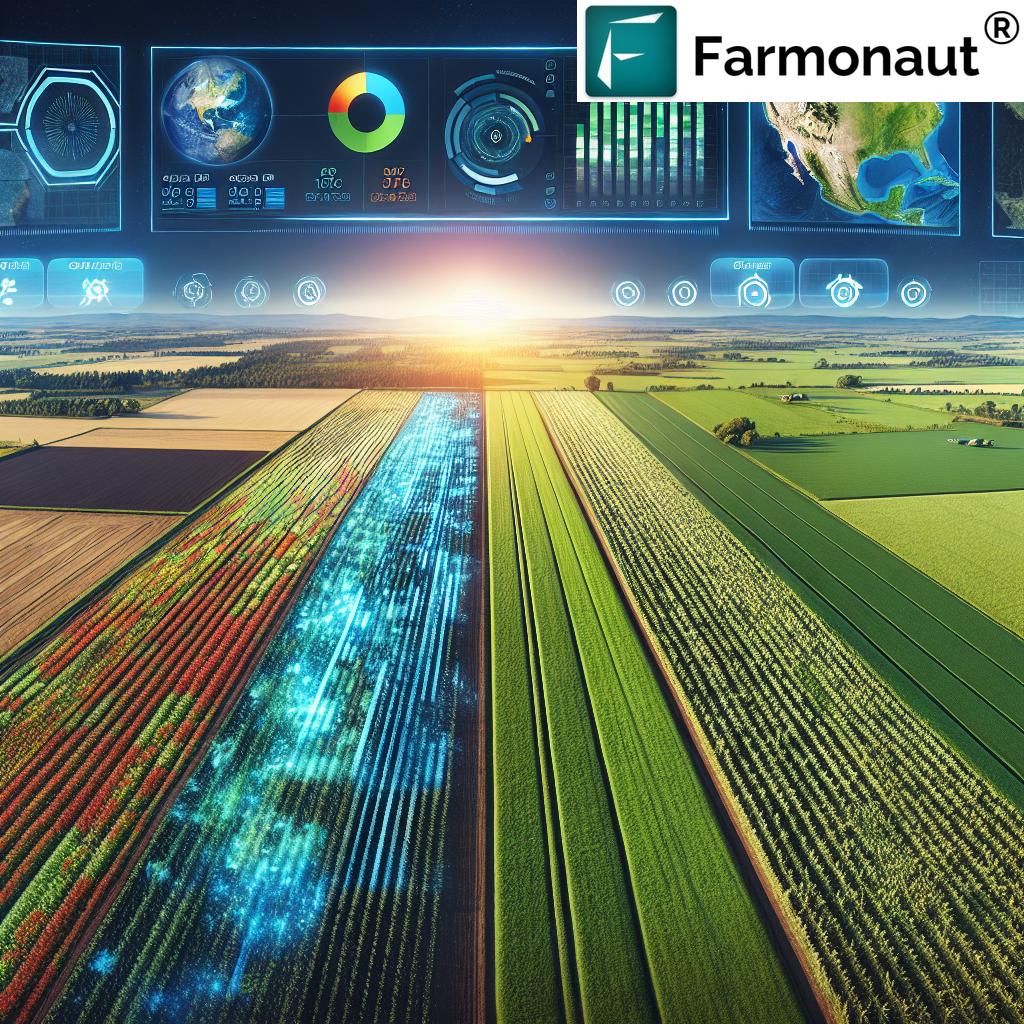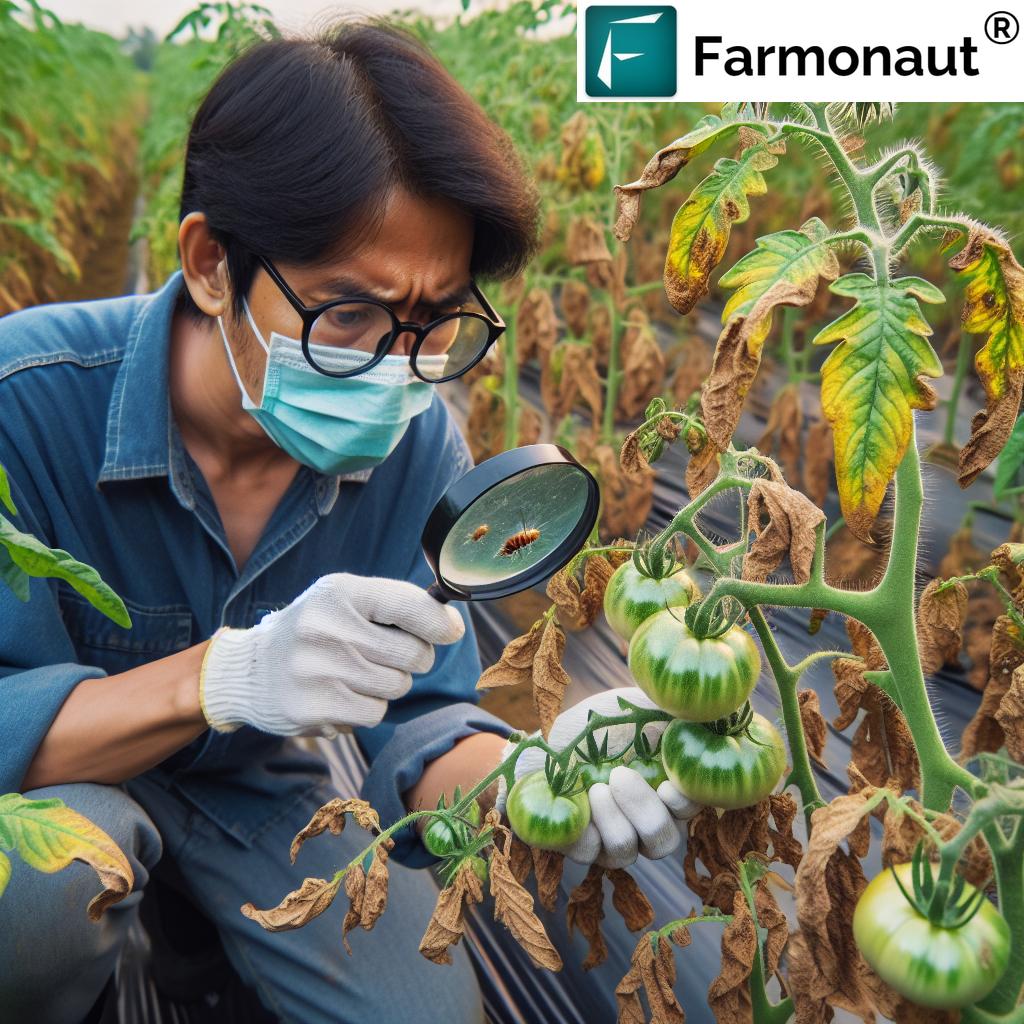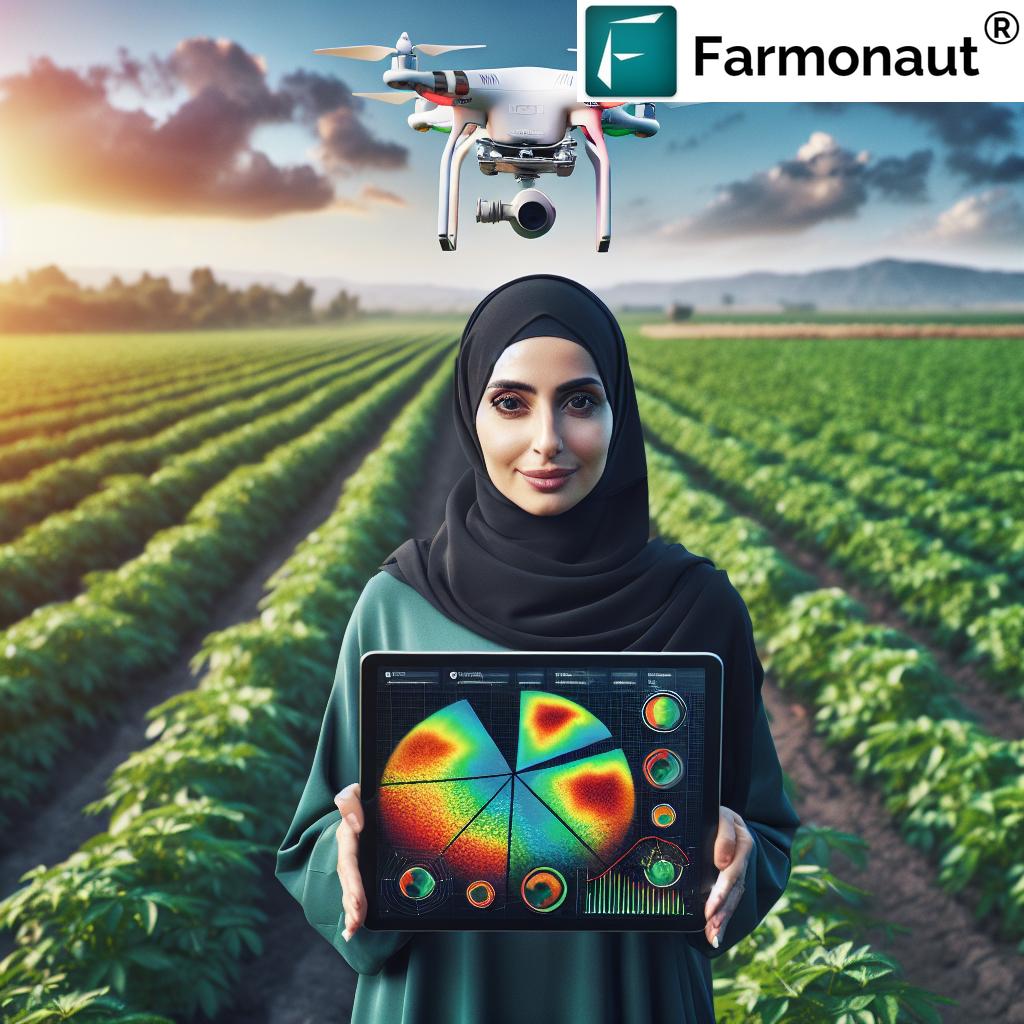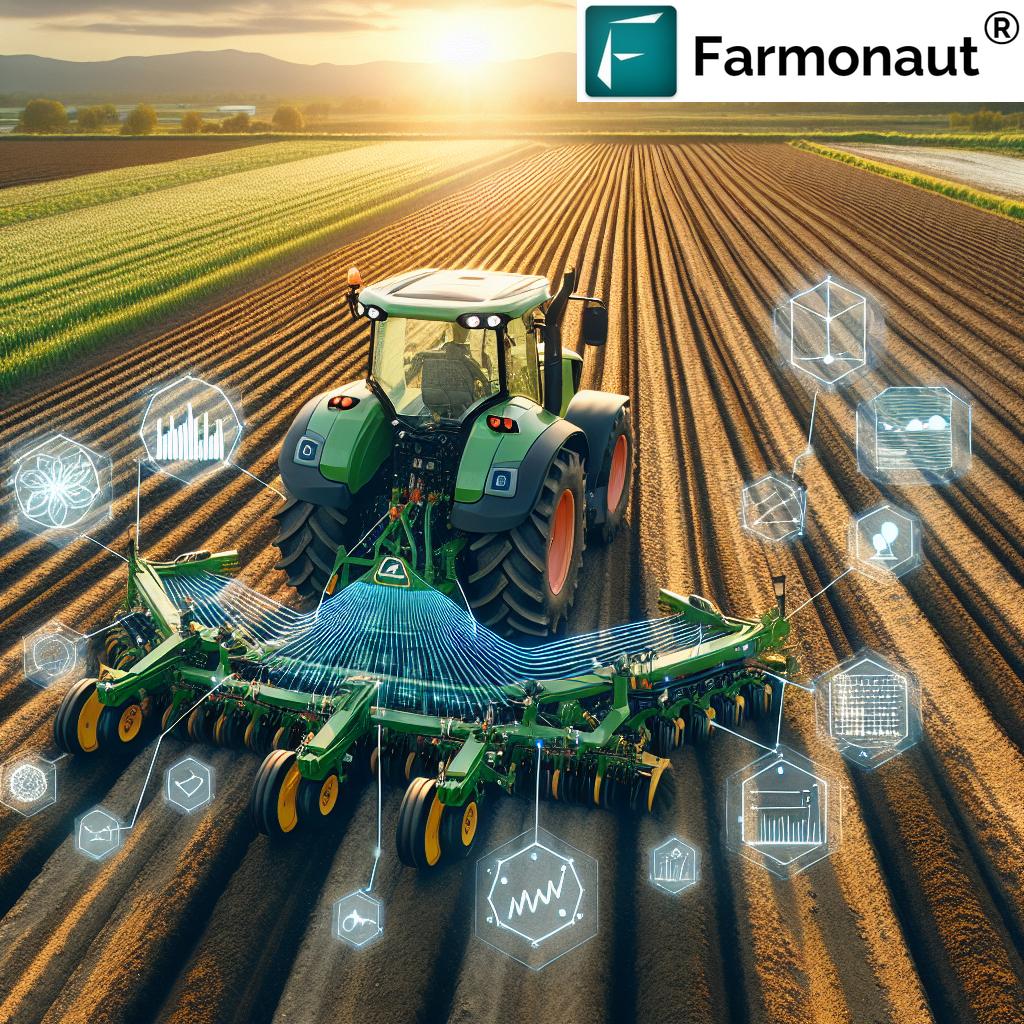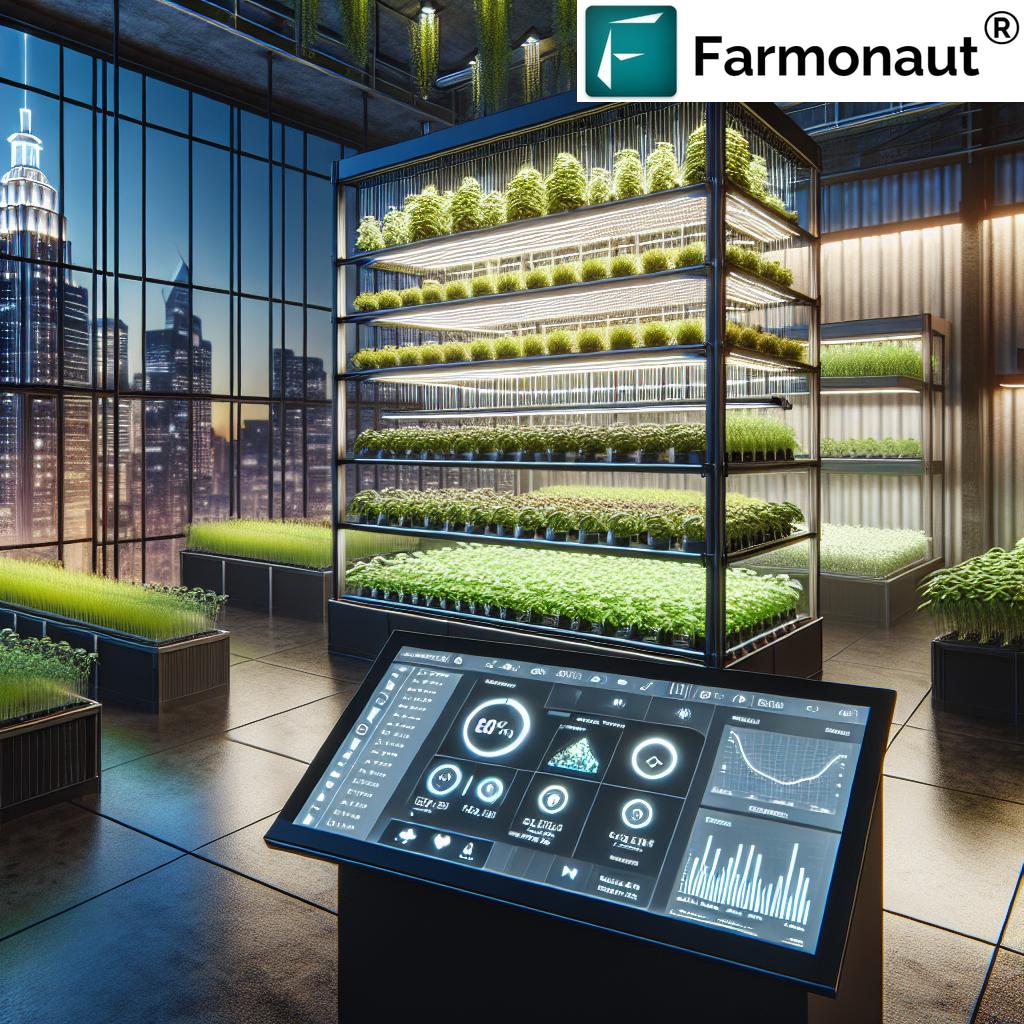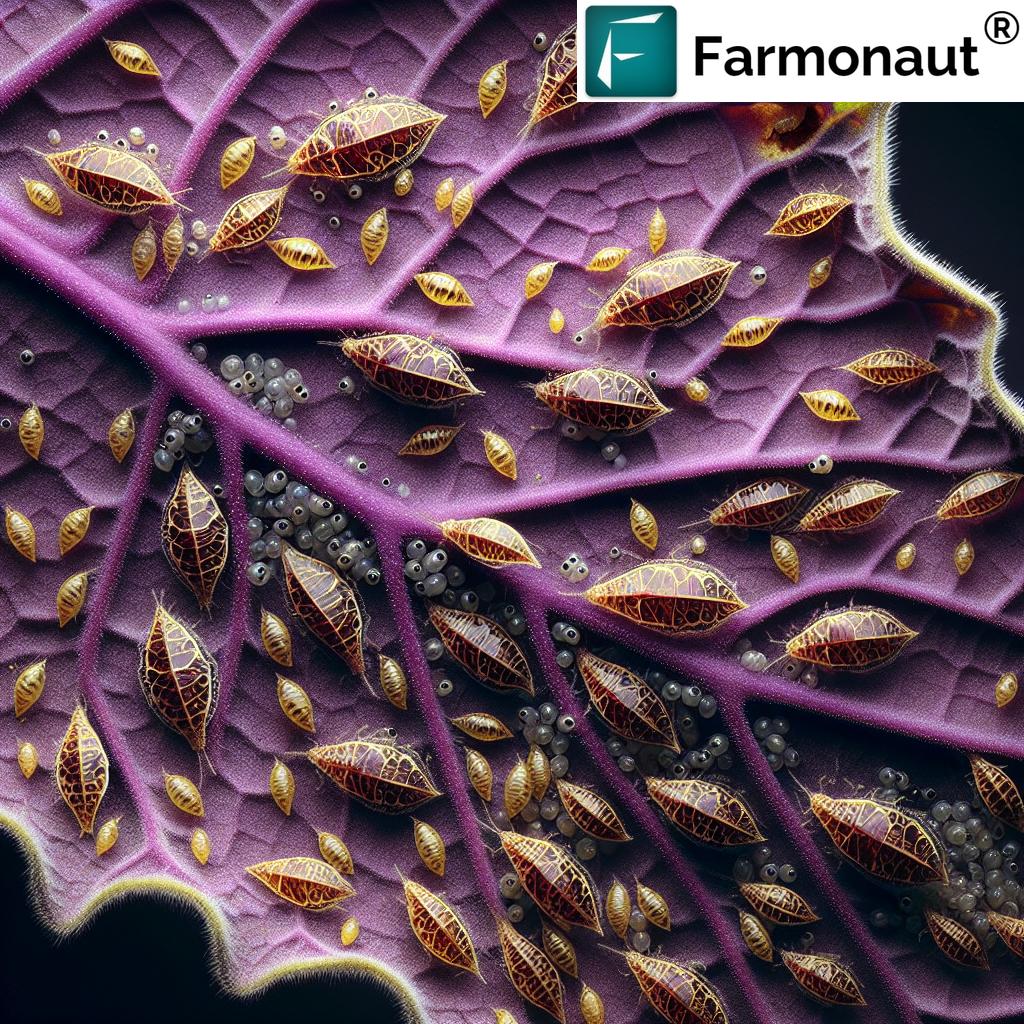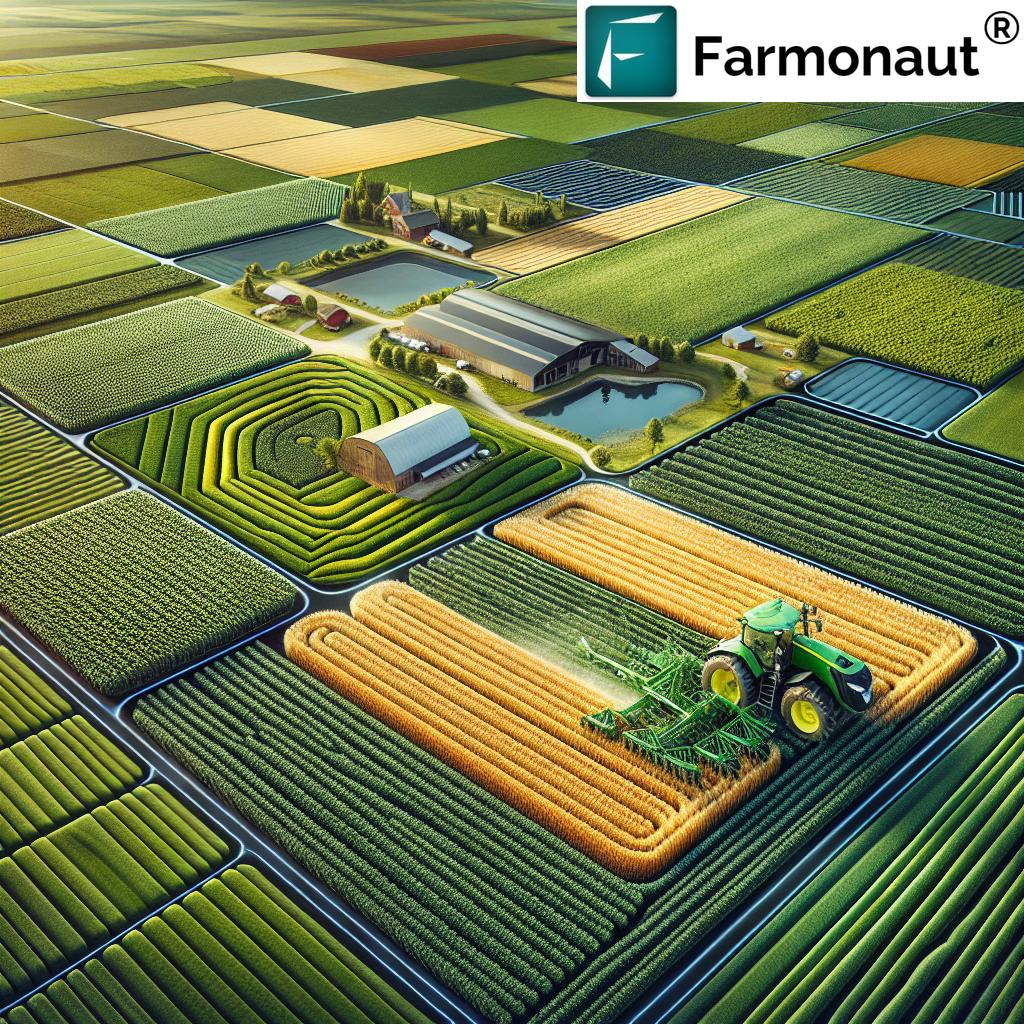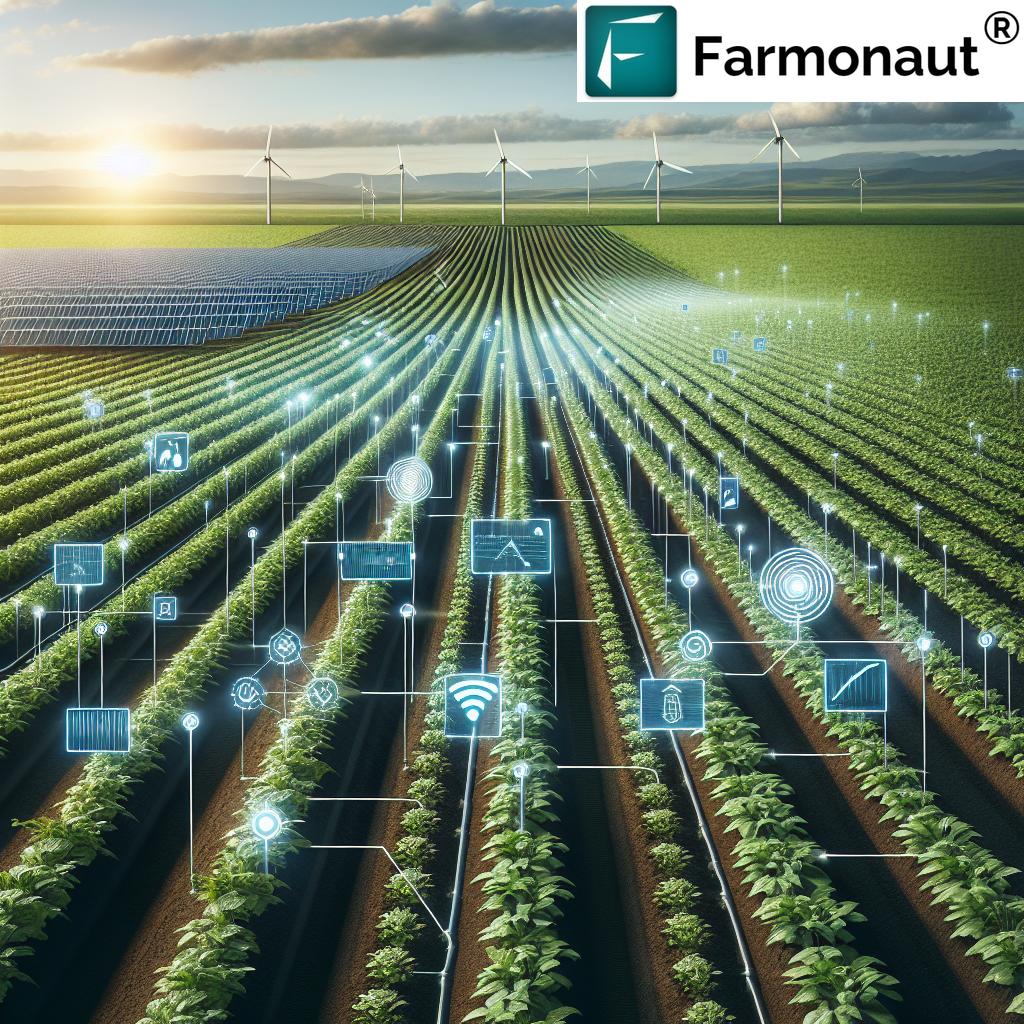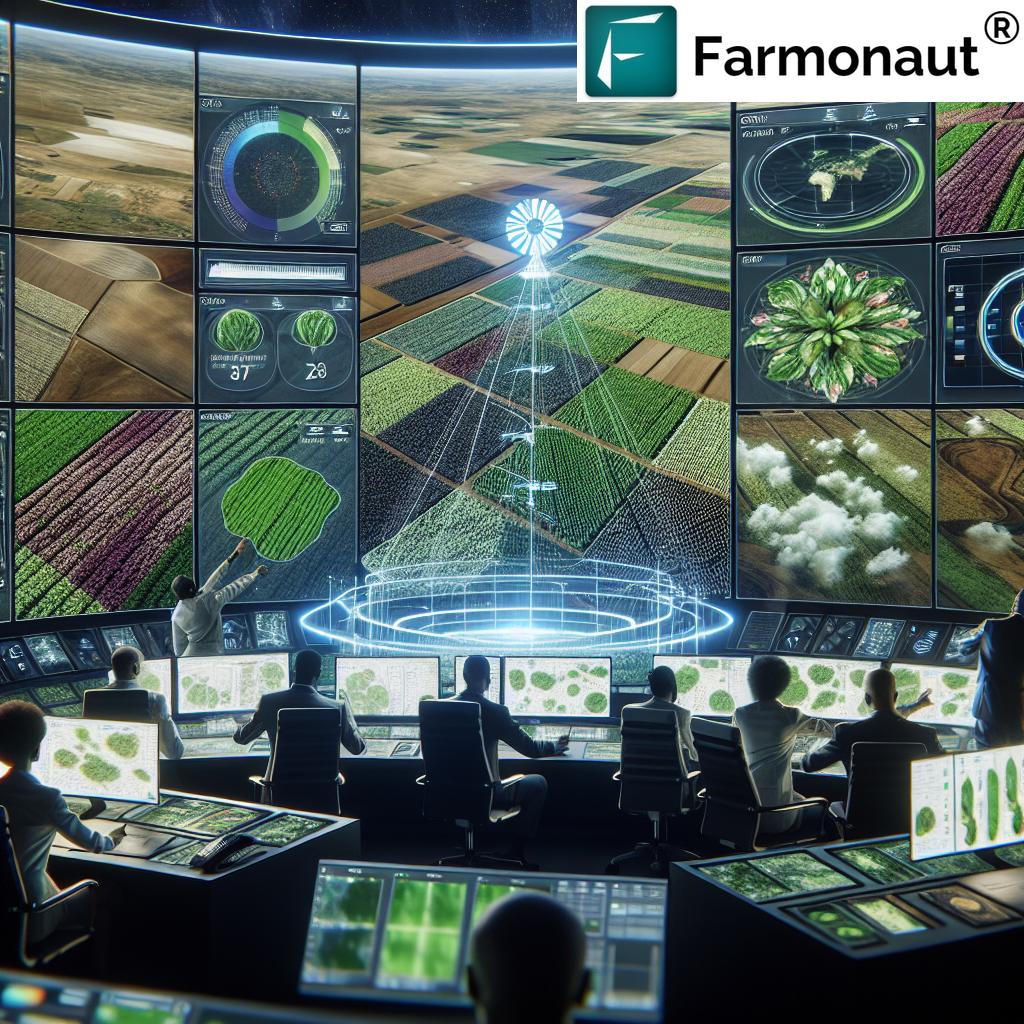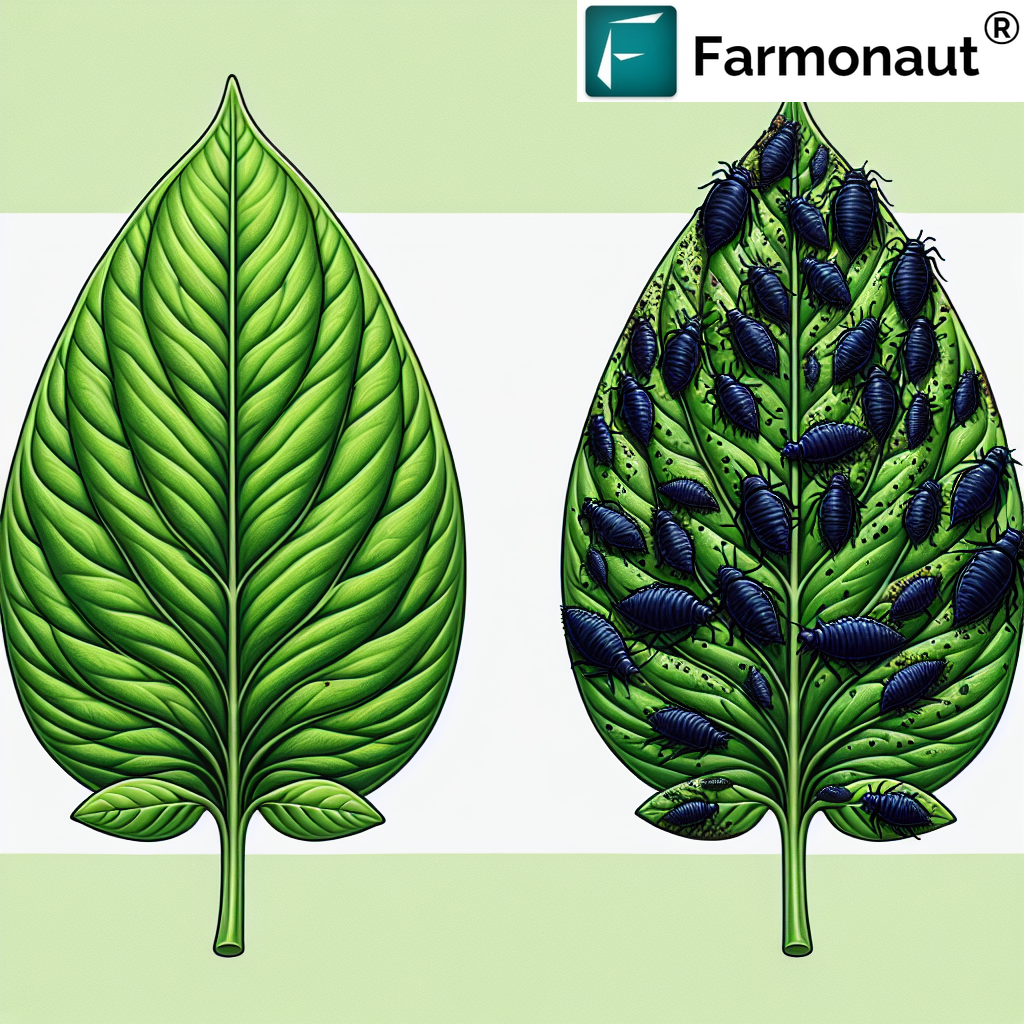Revolutionizing Australian Vineyards: How GIS and AgTech are Transforming Sustainable Winegrowing
“Australian wine exports reached $2.89 billion in 2020, with China being the largest market at $1.15 billion.”
Welcome to our comprehensive exploration of how cutting-edge agricultural technology is reshaping the Australian wine industry and global wine export market. In this blog post, we’ll delve into the world of sustainable winegrowing practices, innovative vineyard management techniques, and the latest agtech solutions that are propelling wineries into a new era of efficiency and sustainability.
The Australian wine sector has long been known for its quality and innovation, but now, with the integration of Geographic Information Systems (GIS) and advanced agricultural technologies, we’re witnessing a true revolution in how vineyards are managed and how wine is produced. Let’s uncork the bottle of knowledge and pour ourselves a glass of insight into this exciting transformation.
The Power of GIS in Transforming Wine Region Mapping
GIS technology has become an indispensable tool in modern viticulture, offering unprecedented precision in vineyard management and planning. Here’s how GIS is revolutionizing wine region mapping:
- Terroir Analysis: GIS allows for detailed mapping of soil types, elevation, and microclimates within vineyards, helping winemakers optimize grape variety selection and planting strategies.
- Resource Management: By integrating data on water resources, drainage patterns, and sunlight exposure, GIS helps in efficient irrigation planning and resource allocation.
- Yield Forecasting: Advanced GIS models can predict grape yields with remarkable accuracy, allowing for better harvest planning and market forecasting.
At Farmonaut, we’re at the forefront of this GIS revolution, offering state-of-the-art satellite-based farm management solutions that bring the power of precision agriculture to vineyards of all sizes.
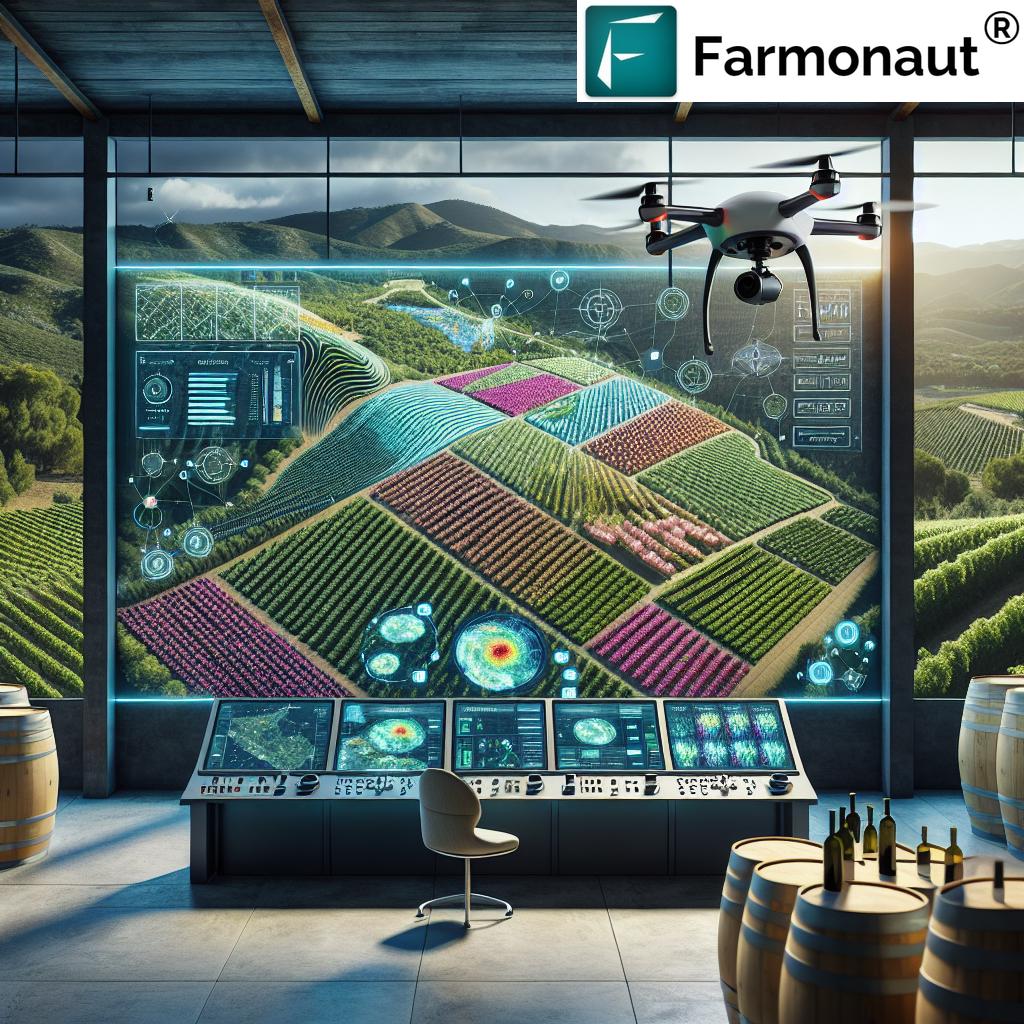
Agtech Solutions Transforming Vineyard Management
The integration of agricultural technology (agtech) in vineyard management is ushering in a new era of efficiency and sustainability. Here are some key innovations:
- Drone Technology: Unmanned aerial vehicles equipped with multispectral cameras provide high-resolution imagery for assessing vine health and detecting issues early.
- IoT Sensors: Internet of Things (IoT) devices monitor soil moisture, temperature, and other critical parameters in real-time, enabling precise irrigation and fertilization.
- AI-Powered Analytics: Machine learning algorithms analyze vast amounts of data to provide actionable insights on everything from pest management to optimal harvest times.
These technologies are not just improving efficiency; they’re also contributing to more sustainable winegrowing practices by reducing water usage, minimizing chemical inputs, and optimizing resource allocation.
Climate Change and Its Impact on Australian Viticulture
Climate change poses significant challenges to the wine industry worldwide, and Australia is no exception. Rising temperatures, changing rainfall patterns, and increased frequency of extreme weather events are altering the traditional winegrowing landscape. However, with challenges come opportunities for innovation:
- Adaptive Vineyard Practices: Winegrowers are experimenting with new grape varieties more suited to warmer climates and implementing innovative canopy management techniques to protect grapes from excessive sun exposure.
- Water Conservation: Advanced irrigation systems and drought-resistant rootstocks are being employed to combat water scarcity in many wine regions.
- Shifting Wine Regions: Some producers are exploring cooler climate areas or higher elevations to maintain optimal growing conditions for certain grape varieties.
Farmonaut’s satellite-based crop health monitoring system plays a crucial role in helping vineyards adapt to these changing conditions by providing real-time data on vegetation health, soil moisture levels, and other critical metrics.
Sustainable Winegrowing: More Than Just a Buzzword
Sustainability in the wine industry goes beyond environmental concerns; it encompasses economic viability and social responsibility. Here’s how Australian wineries are leading the charge in sustainable winegrowing:
- Organic and Biodynamic Practices: Many vineyards are transitioning to organic or biodynamic farming methods, eliminating synthetic pesticides and fertilizers.
- Carbon Footprint Reduction: Wineries are implementing renewable energy solutions and optimizing their supply chains to reduce overall carbon emissions.
- Water Management: Advanced technologies like Farmonaut’s platform are helping wineries monitor and optimize water usage, a critical factor in Australia’s often drought-prone regions.
These sustainable practices not only benefit the environment but also contribute to the production of high-quality wines that increasingly discerning consumers are seeking.
Wine Market Analytics: Navigating the Global Landscape
In today’s competitive global wine market, data-driven decision-making is crucial. Wine market analytics provide valuable insights into consumer preferences, pricing trends, and emerging market opportunities. Here’s how analytics are shaping the industry:
- Consumer Behavior Analysis: Advanced data analytics help wineries understand shifting consumer preferences, enabling them to tailor their products and marketing strategies accordingly.
- Price Optimization: Predictive models assist in setting optimal price points for different markets and segments, maximizing profitability while remaining competitive.
- Supply Chain Optimization: Analytics tools help wineries streamline their supply chains, reducing costs and improving efficiency from grape to glass.
Farmonaut’s AI-driven advisory system, Jeevn AI, complements these market analytics by providing real-time insights and expert crop management strategies, helping wineries align their production with market demands.

Navigating Wine Export Strategies in Key Markets
The Australian wine industry has long been export-oriented, with a significant portion of its production destined for international markets. Let’s explore some key export strategies for major markets:
China: Rebuilding and Diversifying
Following recent trade challenges, Australian wineries are focusing on rebuilding relationships and exploring new avenues in the Chinese market:
- Emphasizing premium and ultra-premium wine segments
- Leveraging e-commerce platforms for direct-to-consumer sales
- Collaborating with Chinese partners to navigate regulatory landscapes
Europe: Capitalizing on Distinctiveness
In the competitive European market, Australian wines are standing out by:
- Highlighting unique terroir and innovative winemaking techniques
- Focusing on sustainability and organic production to appeal to eco-conscious consumers
- Utilizing GIS data to showcase the diversity of Australian wine regions
Southeast Asia: Emerging Opportunities
Countries like Indonesia, Thailand, and Vietnam present growing opportunities for Australian wine exports:
- Tailoring marketing strategies to local tastes and consumption patterns
- Educating consumers about wine appreciation and food pairings
- Leveraging Australia’s reputation for quality and food safety
Farmonaut’s blockchain-based traceability solutions can play a crucial role in these export strategies by ensuring transparency and authenticity in the supply chain, which is particularly valuable in new and emerging markets.
Pest and Disease Management: A Tech-Driven Approach
Effective pest and disease management is crucial for maintaining vineyard health and ensuring high-quality wine production. Modern viticulture is embracing technology to combat these challenges more efficiently and sustainably:
- Early Detection Systems: Satellite imagery and drone surveillance can identify potential pest or disease outbreaks before they become visible to the naked eye, allowing for prompt intervention.
- Precision Application: GPS-guided sprayers ensure targeted application of treatments, reducing overall chemical usage and minimizing environmental impact.
- Biological Control Methods: Advanced research is leading to the development of more effective and environmentally friendly biological control agents for common vineyard pests.
Farmonaut’s satellite-based crop health monitoring system plays a vital role in this tech-driven approach, providing timely alerts and detailed vegetation health indices that help vintners make informed decisions about pest and disease management.
“GIS technology has helped increase vineyard productivity by up to 30% through precise mapping and management.”
The Future of Winegrape Production: Trends and Innovations
As we look to the future of winegrape production in Australia and globally, several exciting trends and innovations are emerging:
- Robotic Viticulture: Autonomous robots for pruning, harvesting, and even pest control are being developed and tested in vineyards around the world.
- Genetic Research: Advanced genomic studies are helping to develop grape varieties that are more resistant to diseases and better adapted to changing climatic conditions.
- Precision Fermentation: New technologies in the winery allow for more precise control over the fermentation process, leading to more consistent and higher-quality wines.
- Virtual Reality in Wine Tourism: VR technologies are being used to offer immersive vineyard tours and tasting experiences, opening up new avenues for wine marketing and education.
These innovations, combined with the power of GIS and agtech solutions like those offered by Farmonaut, are set to revolutionize the wine industry, making it more efficient, sustainable, and responsive to consumer demands.
Navigating Wine Labelling Regulations in a Global Market
As Australian wines continue to make their mark on the global stage, understanding and complying with international wine labelling regulations is crucial for successful exporting. Here’s an overview of key considerations:
- Geographical Indications (GIs): Proper use of GIs is essential, especially when exporting to markets like the EU where these designations are strictly regulated.
- Allergen Information: Many countries require clear labelling of potential allergens, including sulfites, which are common in wine production.
- Alcohol Content: Accurate representation of alcohol by volume (ABV) is mandatory, with different markets having varying tolerance levels for stated vs. actual content.
- Organic and Biodynamic Certifications: For wines marketed as organic or biodynamic, compliance with local certification standards is crucial.
Farmonaut’s blockchain-based traceability solutions can assist wineries in maintaining accurate records and ensuring compliance with these complex labelling requirements across different markets.
Emissions Reduction in the Wine Industry: A Sustainable Future
The wine industry is increasingly focusing on reducing its carbon footprint as part of broader sustainability initiatives. Here are some key strategies being implemented:
- Energy-Efficient Winemaking: Implementing energy-efficient equipment and processes in wineries, including solar power and waste heat recovery systems.
- Sustainable Packaging: Exploring lighter glass bottles, alternative packaging materials, and bulk shipping to reduce transportation emissions.
- Carbon Sequestration in Vineyards: Implementing practices that enhance soil carbon storage, such as cover cropping and reduced tillage.
- Emissions Tracking: Utilizing advanced tools to measure and monitor carbon emissions across the entire wine production and distribution chain.
Farmonaut’s carbon footprinting feature aligns perfectly with these industry goals, providing wineries with real-time data on their emissions and helping them identify areas for improvement.
The Role of Technology in Wine Tourism
Wine tourism is an integral part of the Australian wine industry, and technology is playing an increasingly important role in enhancing visitor experiences and marketing efforts:
- Augmented Reality (AR) Vineyard Tours: AR apps can provide visitors with interactive information about vine varieties, growing techniques, and wine production as they walk through vineyards.
- Virtual Tastings: Online platforms enable wineries to conduct virtual tasting sessions, reaching a global audience and creating new revenue streams.
- Social Media Integration: Leveraging platforms like Instagram and Facebook for real-time updates on harvest progress, events, and behind-the-scenes glimpses of winery operations.
- Data-Driven Personalization: Using customer data to tailor wine tourism experiences and marketing messages to individual preferences and behaviors.
While Farmonaut’s primary focus is on agricultural technology, our data insights can indirectly support wine tourism efforts by providing wineries with compelling stories about their sustainable and high-tech farming practices.
Farmonaut: Empowering Australian Winegrowers
At Farmonaut, we’re proud to be at the forefront of the AgTech revolution in the Australian wine industry. Our cutting-edge satellite-based farm management solutions are helping winegrowers across the country optimize their operations and embrace sustainable practices. Here’s how we’re making a difference:
- Real-Time Crop Monitoring: Our satellite imagery provides up-to-date information on vine health, helping growers identify and address issues promptly.
- AI-Powered Insights: Our Jeevn AI system delivers personalized recommendations for vineyard management, taking into account local conditions and historical data.
- Resource Optimization: By providing detailed data on soil moisture and other key parameters, we help wineries reduce water usage and optimize resource allocation.
- Sustainability Tracking: Our carbon footprinting feature allows wineries to monitor and reduce their environmental impact, supporting industry-wide sustainability goals.
We invite you to explore how Farmonaut can transform your vineyard operations:
For developers interested in integrating our powerful satellite and weather data into their own systems, check out our API and API Developer Docs.
Farmonaut Satellite System Impact on Australian Vineyards
| Vineyard Management Aspect | Traditional Methods | With Farmonaut Satellite System | Estimated Improvement |
|---|---|---|---|
| Water Usage Efficiency | 70% | 92% | 22% |
| Pest Detection Accuracy | 60% | 85% | 25% |
| Harvest Yield Prediction | ±15% accuracy | ±5% accuracy | 10% improvement in accuracy |
| Climate Change Adaptation | Reactive measures | Proactive strategies based on data | Significant long-term resilience |
| Resource Allocation Efficiency | 75% | 95% | 20% |
Conclusion: Embracing the Future of Australian Wine
As we’ve explored throughout this blog post, the Australian wine industry is at the cusp of a technological revolution. From GIS-driven vineyard management to AI-powered market analytics, the integration of AgTech is transforming every aspect of wine production and distribution. At Farmonaut, we’re excited to be part of this transformation, providing cutting-edge solutions that empower winegrowers to produce exceptional wines while embracing sustainability.
The future of Australian wine is bright, with innovation and technology paving the way for continued success in the global market. By leveraging advanced tools and data-driven insights, the industry is well-positioned to overcome challenges, from climate change to shifting consumer preferences, and continue to produce world-class wines that captivate palates around the globe.
We invite you to join us on this exciting journey. Whether you’re a small boutique winery or a large-scale producer, Farmonaut’s solutions can help you optimize your operations, reduce your environmental impact, and stay ahead in the competitive world of wine. Cheers to the future of Australian wine!
FAQ Section
Q: How does GIS technology improve vineyard management?
A: GIS technology enhances vineyard management by providing precise mapping of soil types, microclimates, and other terrain factors. This allows for optimized planting strategies, efficient resource allocation, and more accurate yield predictions.
Q: What role does Farmonaut play in sustainable winegrowing?
A: Farmonaut offers satellite-based crop monitoring and AI-driven insights that help winegrowers optimize water usage, reduce chemical inputs, and make data-driven decisions for more sustainable vineyard management.
Q: How is climate change affecting Australian vineyards?
A: Climate change is impacting Australian vineyards through rising temperatures, changing rainfall patterns, and more frequent extreme weather events. This is leading to shifts in suitable growing regions and necessitating adaptive vineyard practices.
Q: What are some key export markets for Australian wines?
A: Key export markets for Australian wines include China, the United States, the United Kingdom, and emerging markets in Southeast Asia such as Vietnam and Indonesia.
Q: How is technology enhancing wine tourism?
A: Technology is enhancing wine tourism through virtual and augmented reality experiences, online tasting sessions, and data-driven personalization of visitor experiences.





